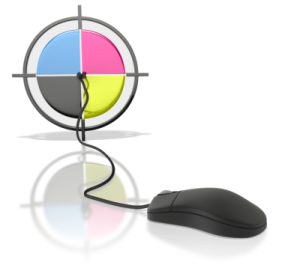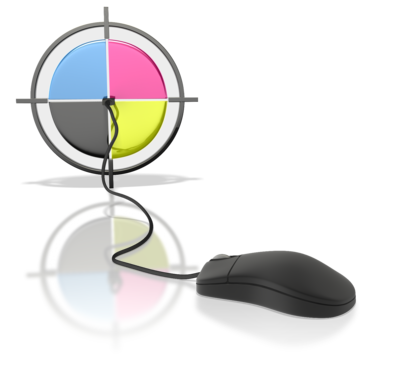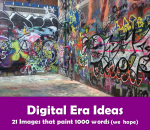[vc_row][vc_column width=”1/1″][vc_row_inner][vc_column_inner width=”1/4″][vc_column_text]

[/vc_column_text][/vc_column_inner][vc_column_inner width=”3/4″][vc_column_text]Logo design in the Digital Era requires attention to a unique set of factors to ensure the logo renders well in a range of applications. These considerations include simple design, strong colors, scalability, complementary fonts, monochromatic renderings, deconstruction and reconfiguration. Additional suggestions are welcome. (December 16, 2013)
Author: Courtney Hunt[/vc_column_text][/vc_column_inner][/vc_row_inner][divider_line type=”divider_line”][vc_column_text]With web-based logo design services like crowdSPRING and 99designs, it’s often fast and convenient to create or update a logo, even if you’re an independently employed person or an organization with a small budget. But the low costs of these services, as well as their relative ease of use, doesn’t mean the process of creating a visual brand identity is simple or that it’s something anyone can do. The “owner” of the logo still has to have a good sense of design and must be particularly cognizant of unique requirements for logo representation via various digital channels.
Having undertaken a logo design project ourselves earlier this year in conjunction with our rebranding efforts, I can attest to how challenging it can be to create a well designed logo that meets a wide-range of often nuanced and easily overlooked criteria. This post offers guidance based on some of the things we learned. You may also want to read the complementary post:
Creating a Brand Identity in the Digital Era: 13 Key Factors.
[/vc_column_text][/vc_column][/vc_row][vc_row][vc_column width=”1/1″][vc_column_text]
Logo Design: Digital Considerations
[/vc_column_text][vc_column_text]Most of us know the basic elements of a good logo design in terms of representing the core ideals of an organization and/or its products and services. But there are a number of unique factors that should be considered to ensure the logo design works well in a variety of digital applications. Here are some things to keep in mind:[/vc_column_text][list style=”orb” color=”grey”]
- Employ simple, clean design, which ideally these days means flat design. Less is decidedly more when it comes to logo design in the Digital Era, so you’ll want to limit the number of elements in the design, as well as the colors.
- Use strong, clear colors. Colors with cool undertones are generally better for digital representations of logos, but regardless of the colors you choose they should render well across a variety of screens and resolutions. Get people to help you test that.
- Ensure the primary image is square – and scalable. A square logo is necessary to create a profile image for channels and pages on various social media sites (e.g., Twitter, Facebook, Google+, YouTube, Pinterest, SlideShare) where you want to establish a branded image. You’ll also want to make sure it will look as good in a favicon or thumbnail as it does in a full version. This may require creating different versions of the main image. For example, we had to create a bolder version of our logo for small applications so the elements could be seen.
- Pick a logo font that compliments the image and also uniquely represents your brand. With literally hundreds (thousands?) of free or low-cost fonts to choose from, there’s no reason to use an ordinary font for your logo. Just remember to pick a true type font that you can download and use in applications like PowerPoint and Word.
- Consider monochromatic as well as full color versions. Monochromatic versions should include black on white, white on color and white on black. Unlike print, most digital applications can work with full color, but to maximize flexibility you want to make sure you can employ different representations. For example, the logo for our Denovati Solutions division is white on cyan, which is the primary color of the Denovati Solutions brand.
- Create a logo that is deconstructable (and reconfigurable). Being able to deconstruct a logo enables you to use specific elements in different applications (e.g., as a bullet in a slide deck, or to create a custom cover image for a Facebook or Google+ page). At the same time you may also need to combine the logo and font in different ways. For example, the standard logo size for LinkedIn company pages is 100 x 60, requiring a horizontally-oriented image.
[/list][vc_column_text]Those are my primary digital considerations for logo design. What other factors would you suggest? As always I welcome your feedback and questions.[/vc_column_text][/vc_column][/vc_row]






Comments
3 responses to “Logo Design in the Digital Era: 6 Critical Factors”
Hi – interesting article. What’s the difference between a true type font and a web safe one? I am having difficulty using consistent fonts across all media. Thanks in advance.
Hi Ellie. I’m not a graphics expert, so I’m probably not the best person to answer that question. I would just have to Google it… 🙂 I can relate to the difficulty though! What I’ve found is that it’s generally best to use standard fonts that will render well and consistently across different media (and even then there are challenges). If we’ve created something that includes a unique font (like our logo font), I convert it to an image or pdf file before using and/or sharing it. Doing that will preserve the font and related formatting.
Hope this helps…
Thanks for this informative posts you explain all the issues in detail regarding the designing